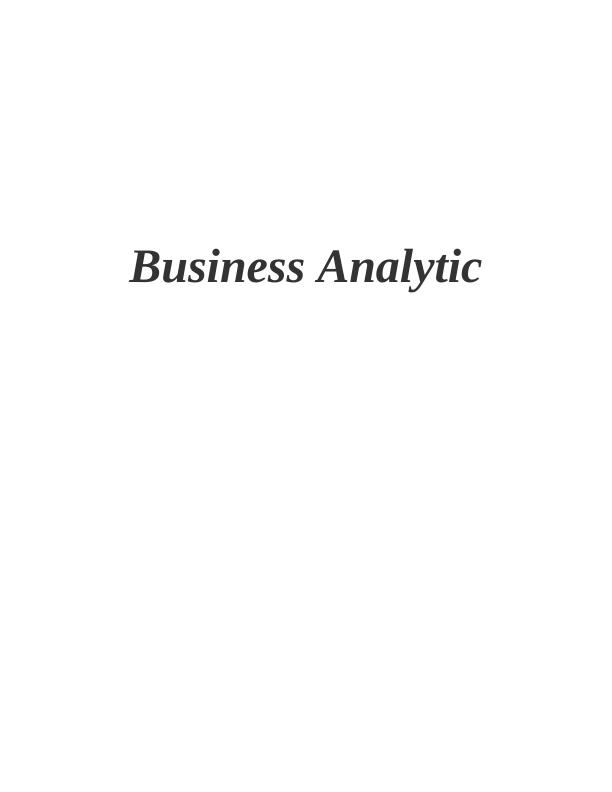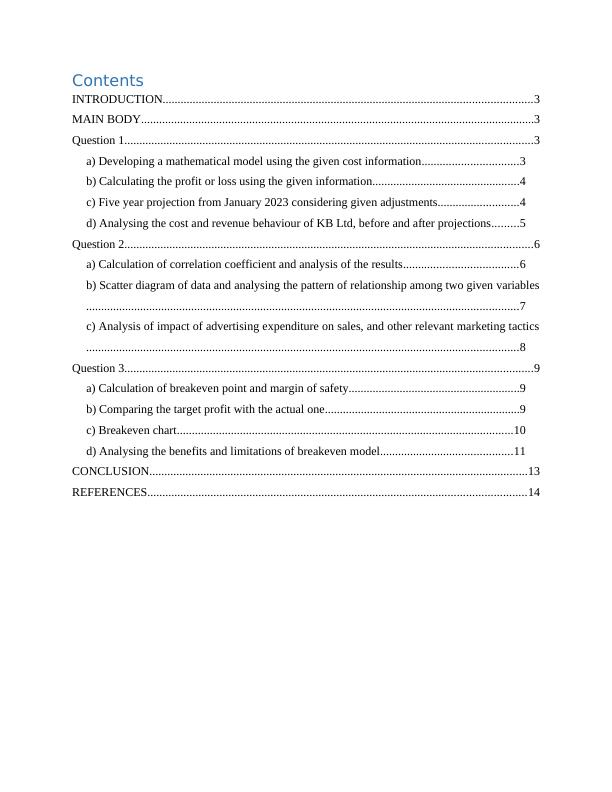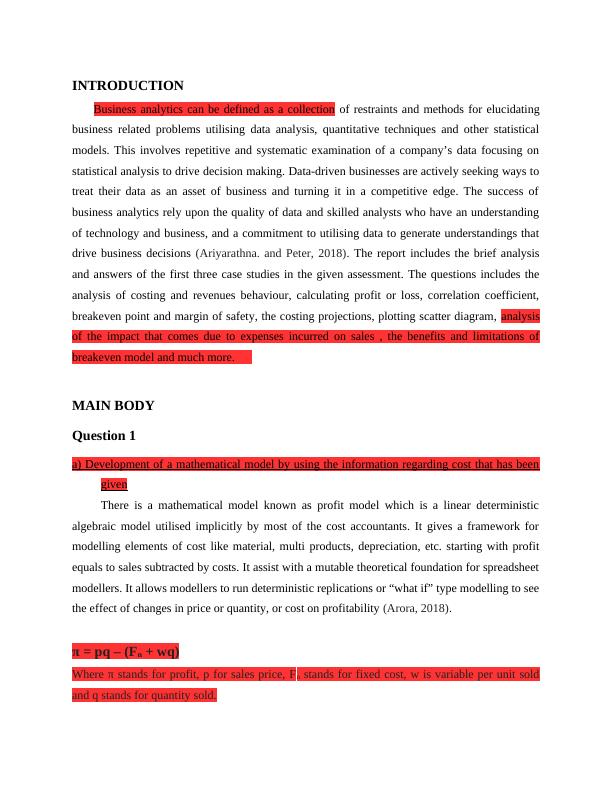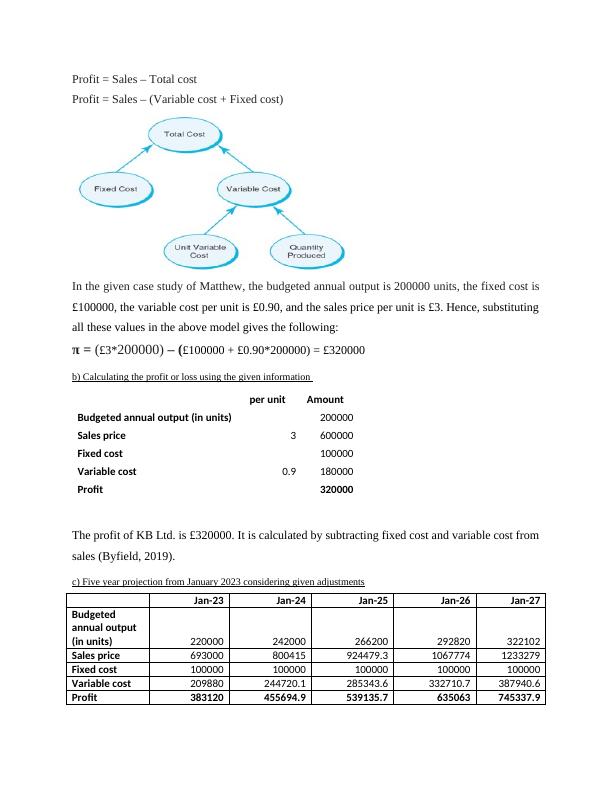Business Analytics: Costing, Revenue Behaviour, Correlation Coefficient, Breakeven Point and Margin of Safety
14 Pages3859 Words315 Views
Added on 2023-06-04
About This Document
This report covers the analysis of costing and revenue behaviour, calculating profit or loss, correlation coefficient, breakeven point and margin of safety, the costing projections, plotting scatter diagram, analysis of the impact that comes due to expenses incurred on sales, the benefits and limitations of breakeven model and much more.
Business Analytics: Costing, Revenue Behaviour, Correlation Coefficient, Breakeven Point and Margin of Safety
Added on 2023-06-04
ShareRelated Documents
End of preview
Want to access all the pages? Upload your documents or become a member.
Business Analytics: Costing and Revenue Behaviour Analysis, Mathematical Modelling, Correlation Coefficient, Break Even Analysis
|16
|4152
|260
Business Analytics: Mathematical Model, Cost and Revenue Behaviour, Correlation Coefficient and Advertising Impact on Sales
|16
|4340
|386
LUBM303 : Business Analytic
|18
|3687
|356
Business Analytics: Benefits and Limitations of Break-even Analysis
|14
|2725
|21
Business Analytics: Mathematical Model, Costing and Revenue Behaviour, Correlation Coefficient, and Marketing Tactics
|17
|4430
|399
Business Analytics: Mathematical Models, Correlation Coefficient, and Marketing Tactics
|15
|3820
|190




